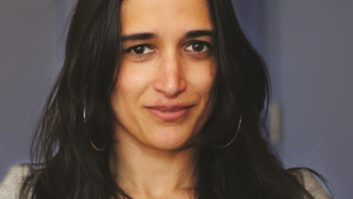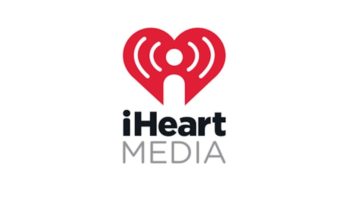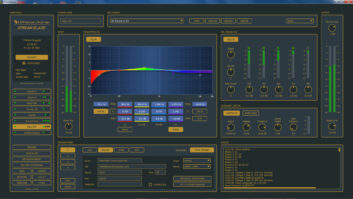It’s August, and that means that the fall conference season is upon us. Unlike the spring with its big shows, the fall offers smaller venues and a range of different specialties. This year’s calendar favors the east coast in particular, with a number of annual shows scheduling eastern sites all nearly at the same time. If you live on this side of the country, it’s a great year to attend a show.
Starting out is the NAB Radio Show, which this year is in Philadelphia. The location makes it a reasonable drive for those of us in the New York, New England and Washington areas as well as engineers coming from markets a bit more to the west like Pittsburgh and to the south such as Richmond. The conference dates are Sept. 23–25.
For radio engineers who missed the large NAB Show in the spring (and I know there were many who did not attend) the Radio Show is a chance to catch up on the radio industry and hear the latest technical information.

Getting up close to the gear is one benefit of being there in person. Wisconsin Public Radio’s Steve Johnston checks out the ‘big iron’ in the power supply section of Continental’s 44 kW 816R-7C FM transmitter at a recent show. Photo by Jim Peck Once again, the NAB has assembled a good selection of sessions for their engineering program. For those who have been following the continuing debate over high-power digital broadcasting, there will be a two-hour session with industry leaders such as Milford Smith, Geoff Mendenhall, Jeff Detweiler, Gary Liebisch, Tim Bealor and Michael Troje to answer all your questions. Mike Starling of NPR Labs will also report on its long-awaited study to determine the impact of increased digital signal levels. In my opinion, this is one of the most important radio technical topics right now.
For AM engineers, Ben Dawson and Ron Rackley will be presenting a detailed tutorial on the tricks and techniques of the new method of moments modeling for directional AM arrays. MoM modeling, on which Radio World has reported extensively, represents a new and powerful way to prove a new AM directional stations that qualify, and offers potential savings for new and old stations alike.
Additionally, sessions on emergency operations, preventing tower failures, IP-based radio facilities and digital media strategies will be offered.
SOCIETY OF BROADCAST ENGINEERS
Next in line is the 2009 SBE National Meeting being held Oct. 6–7 at the Turning Stone Resort and Casino in Verona, N.Y.
The national meeting is combined with a day of presentations on broadcast engineering topics and an equipment exhibition hall produced by SBE Chapter 22. The list of presentations at this writing is heavy on television engineering, but this is the shortest of the fall shows and also the least expensive. For those in the upper New York state region there is little excuse not to attend.
AUDIO ENGINEERING SOCIETY
Just a week later we have the 127th AES convention, running Oct. 9–12. This conference is about everything audio and includes a special session track aimed just at broadcasting.
Some sample sessions from the broadcast track are “Studio Design and Acoustics Case Study”; “Innovations in Digital Broadcasting”; “Digital Audio Networks in the Studio”; and “Audio for Newsgathering.” Another session that caught my interest is “Listener Fatigue and Longevity,” featuring panelists such as JJ Johnston and Ellyn Sheffield.
But that only touches on the wide range of other audio sessions that will be offered. Paper sessions include research papers from all over the world on the most complex audio topics, such as the physiology of audio perception and new research on data compression. The AES convention is where the latest basic research and development on audio is presented. There are also day-length workshops on a variety of audio topics, such as live recording or statistical measurement of audio quality. These workshops can provide an in-depth treatment that is hard to find at other conventions.
This year’s AES Convention will be held in New York (in alternate years it is held on the west coast in San Francisco). Again, this is a reasonable drive for engineers in numerous big and small markets in the region.
IEEE
Starting right after the AES is the 59th annual Broadcast Symposium of the IEEE, Oct. 14–16. While small, this features some of the best presentations and papers on the latest in broadcast research and development. Intended primarily for engineers, the symposium operates at a level that assumes an extensive background in theoretical engineering.
Scheduled to present on Wednesday the 14th is John Kean of NPR Labs with a tutorial on modern FM and IBOC signal coverage measurement techniques. On the same day is a presentation from Russ Mundschenk of iBiquity Corp. about the results of their field tests of IBOC at elevated carrier levels. On Thursday there will be presentations on AM modeling using NEC and a general presentation on the characteristics of monopole and vertically polarized dipole antennas.
This year’s Broadcast Symposium will be held in Alexandria, Va., right outside of Washington.
TOO MUCH TO HANDLE
The fall is filled with opportunities to learn more about engineering and broadcasting with a different show just about every week for a month. And we have not mentioned regional events such as SBE Chapter 24 and the Wisconsin Broadcasters Association hosting the Broadcasters Clinic on Oct. 13–15 in Middleton, Wis., or Chapter 20’s Annual Equipment Expo on Oct. 19–20 in Monroeville, Pa., or the annual Indiana Broadcasters Association’s Engineering Workshop, which takes place Oct. 27–28 in Indianapolis.
Most of us will find attending all of these shows every year too much to fit into our busy schedules. But this wealth means that there is something for everyone out there. Go ahead and pick one — it’s a great way to keep your knowledge up to date, and they count towards SBE re-certifications too.












